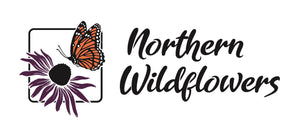Our Blog
-
Harvesting Tips for Gardeners: Get the Best Flavour & Freshness
Knowing when and how to harvest your fruits and vegetables can make a big difference in flavour, texture, and shelf life. Here are some essential tips to help you get the most out of your garden’s bounty.
-
Botanical Cousins: Understanding the Connections Between Your Garden Favourites
Have you ever planted your garden and wondered why your kale and cabbage seem to share the same problems? Or why your zucchinis and pumpkins seem to attract the same pests? Or why seeds you saved last year are producing a mystery fruit? That’s because many of the veggies in your garden are more closely related than you might think!
-
5 Wildflowers Fit for a Food Forest
Filling a food forest with native flowering plants alongside common wild food plants like Ostrich Fern or Wild Leeks is a great way to add more function and fun. All 5 of these wildflowers provide visual interest, wildlife habitat, and food for your permaculture orchard or food forest.
-
Save Water, Grow Food: The Best Strategies and Plants for a Drought-Resistant Garden
Choosing the right crops, improving soil health, and using water-wise techniques can make all the difference in maintaining a productive vegetable garden, even in dry conditions. Learn how to grow a drought tolerant vegetable garden and reduce your water inputs in the garden, whether it's out of of necessity or choice.
-
"Fast Food" Garden - Quick Yielding Vegetables & Garden Plans
If you’re looking for a garden that delivers fresh, homegrown produce in the shortest time possible, a “Fast Food” Garden is the way to go! By selecting these quick-maturing varieties and using smart planting strategies, you can enjoy harvests in just a few weeks. Whether you're planting in early spring, mid-summer, or even for a fall crop, this guide will help you design a productive garden that keeps the fresh food coming.
-
Growing Stronger: 2024 Year in Review
As we wrap up 2024, we at Northern Wildflowers can’t help but feel an overwhelming sense of pride and gratitude. It’s been a year of incredible gro... -
Plant This, Not That - Native Plant Alternatives to Common Garden Perennials
Here are just a few examples of native alternatives to common perennial garden ornamentals. Because why not swap them for a more wildlife and pollinator friendly alternative?
-
The Colours of Attraction: How Flowers and Pollinators Evolve Together
Pollinators—including bees, birds, butterflies, and bats—have played a key role in shaping flower colouration, and vice versa. The colours of flowers are a form of adaptation, evolving to attract specific pollinators best suited to them. Let's explore how this works. -
Boost Biodiversity by Planting These 5 Host Plants
If you’re looking to make a positive impact in your garden, growing native wildflowers and grasses is a great place to start. Not only do they add natural beauty, but many of these plants also serve as host plants for essential pollinators, providing food and habitat for caterpillars and other beneficial insects. Here are five native plants to consider, plus a bonus tip about trees and shrubs for supporting pollinator biodiversity. -
What's With the Buzz About Micromeadows?
In recent years, micromeadows have become increasingly popular as a way to transform small urban spaces into thriving pockets of biodiversity. Whether you're a city dweller with a tiny backyard or someone looking to revitalize a neglected corner of your garden, micromeadows offer a simple, low-maintenance solution with a big environmental impact. -
Miyawaki Forests
The Miyawaki method, developed by Japanese botanist Akira Miyawaki in the early 1970s, focuses on rapid reforestation by planting dense clusters of... -
Homemade Cranberry Sauce
With holiday meals and gatherings approaching, I wanted to share a reminder that it is actually SO EASY to make your own cranberry sauce rather tha...
- Page 1 of 6
- Next page












